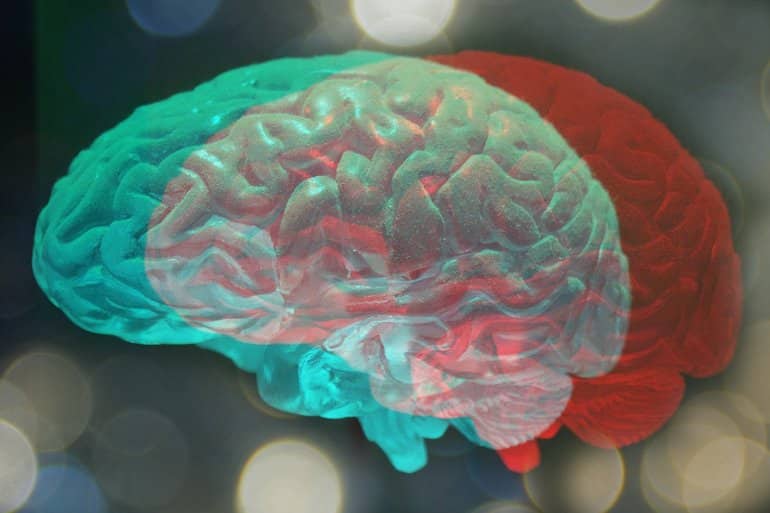Summary: Disrupted neurotransmission via nicotinic acetylcholine receptors during fetal development results in an impaired preference for animate objects similar to autism in chick models.
Source: Hokkaido University
Autism spectrum disorder (ASD) refers to a group of disabilities due to atypical brain development. Individuals with ASD have difficulties in social communication and interaction. Diverse causes of ASD are hypothesized, but most of them remain to be understood. A vast research effort has thus been invested to develop appropriate animal models to study the causes.
A team of researchers led by Professor Emeritus Toshiya Matsushima at Hokkaido University found an ASD-like behavioral impairment in chicks, suggesting a molecular pathway of ASD pathogenesis.
Their results were published in the online journal Cerebral Cortex Communications.
One of the earliest indications of ASD is a retarded preference for animate objects such as face configuration and biological motion (BM). This preference typically appears in neonates (newborns), but it is hampered in individuals with familial ASD risk. Common mammalian model animals such as rats and mice are not valid for studying this aspect of ASD as they do not spontaneously exhibit BM preference.
The team used chicks as a model to study BM preference. Similar to humans, chicks exhibit a preference for BM very early in life, concomitant with social attachment formation by imprinting. Although birds and mammals diverged some 300 million years ago, some of their visual and motor control systems are conserved despite the evolutionary distance.
The authors initially hypothesized that spontaneous movement of fetuses is critical for the BM preference to develop. To test this, they injected fertilized eggs with ASD-risk chemicals while “listening” to the fetal movements through a record stylus gently placed on the shell surface. After hatching, preference of the chicks was tested in a T-shaped maze.
Chemicals that arrest fetal movements were systematically tested. Ketamine, tubocurarine, methyllycaconitine and imidacloprid (IMI) significantly reduced the BM preference without impairing the imprinting memory formation; these chemicals act on nicotinic acetylcholine receptors (nAChRs).

Interestingly, when bumetanide—a drug reported to reduce severity in some ASD cases—was administered to chicks before imprinting, typical BM preference was resumed.
Contrary to the initial hypothesis, however, the arrested fetal movement did not necessarily cause impairment in BM preference. Rather, the results show that transmission via nAChRs per se is critical. If disturbed, the BM preference is lost, and chicks fail to form selective social attachment to biological objects.
Particular concern resides in IMI, one of the most widely used neonicotinoid insecticides. As it impaired the BM at concentrations as low as 1 ppm, environmental neonicotinoids could cause a similar retardation on human neonates if they are exposed during pregnancy, according to the study.
This study established advantages of using chicks as an ASD model. The primary advantage is the phenotype similarity between chicks and humans. Furthermore, the oviparous nature of chickens allows for precise and speedy screening of risk chemicals. But does the chick story really tell us about human ASD? The affected brain region must be clarified in terms of evolutionary neurobiology to reveal genuine similarities between birds and humans.
About this ASD research news
Author: Sohail Keegan Pinto
Source: Hokkaido University
Contact: Sohail Keegan Pinto – Hokkaido University
Image: The image is in the public domain
Original Research: Open access.
“Fetal blockade of nicotinic acetylcholine transmission causes autism-like impairment of biological motion preference in the neonatal chick” by Toshiya Matsushima et al. Cerebral Cortex Communications
Abstract
Fetal blockade of nicotinic acetylcholine transmission causes autism-like impairment of biological motion preference in the neonatal chick
Several environmental chemicals are suspected risk factors for autism spectrum disorder (ASD), including valproic acid (VPA) and pesticides acting on nicotinic acetylcholine receptors (nAChRs), if administered during pregnancy. However, their target processes in fetal neuro-development are unknown.
We report that the injection of VPA into the fetus impaired imprinting to an artificial object in neonatal chicks, while a predisposed preference for biological motion (BM) remained intact. Blockade of nAChRs acted oppositely, sparing imprinting and impairing BM preference.
Beside ketamine and tubocurarine, significant effects of imidacloprid (a neonicotinoid insecticide) appeared at a dose ≤1 ppm. In accord with the behavioral dissociations, VPA enhanced histone acetylation in the primary cell culture of fetal telencephalon, whereas ketamine did not.
VPA reduced the brain weight and the ratio of NeuN-positive cells (matured neurons) in the telencephalon of hatchlings, whereas ketamine/tubocurarine did not. Despite the distinct underlying mechanisms, both VPA and nAChR blockade similarly impaired imprinting to biological image composed of point-light animations.
Furthermore, both impairments were abolished by postnatal bumetanide treatment, suggesting a common pathology underlying the social attachment malformation.
Neurotransmission via nAChR is thus critical for the early social bond formation, which is hindered by ambient neonicotinoids through impaired visual predispositions for animate objects.






